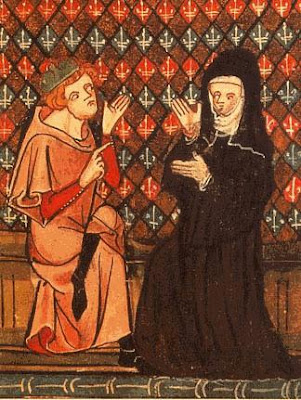


Pierre Abelard -best known for his loves with her pupil Héloïse - was maybe the first libertarian anarchist in the early Middle Age (1079-1142). Of course, no such term was cognated till the times of Bakunin or Proudhon, but he was owning the tenets and characters that nowadays we call so.
Polemicist up to the weariness, he rejected authority and dogma, especially in religious thinking, in favor of rational inquiry and speculation. You should think on in which context his life developed: In the peak of the Crusades, there was growing in France the social ambience that would lead in the creation of the Inquisition 42 years after his death to prosecute heresy. He was castrated due to his pupil Héloïse’s pregnancy. However, they never married. Open mind. Freaky guys.
As a teacher and lecturer on philosophy and theology with such a libertarian spirit, for sure that bias was not the one that more the monks and Popes appreciated. Nevertheless, the pupils' crowds of the whole France and abroad were congregating to attend his classroom.
Excelling at the art of dialectic, was the father of conceptualism. Nowadays, 900 years later, another great anarchist and linguist at MIT, Noam Chomsky, developed the theory of generative grammar from such ground.
When Abelard published Theologia 'Summi Boni', their adversaries took his rationalistic interpretation of the Trinitarian dogma to tag he as heretic, made him to burn his own book and he was exiled to a monastery. It was the bitterest possible experience that could befall him.
Some time later, and since the life with the monks was becoming unbearable, he was allowed to leave the monastery. He turned then hermit, building a tent of stubble and reeds, and was followed by its students who flocked from Paris. Some years later he founded his own school, who he called the Paraclet.
After almost ten years in which they lived apart, Héloïse, now nun, wrote three letters to Abelard, the first of whom remains an unsurpassed utterance of human passion and womanly devotion.
Prosecuted and charged again on heresy by Rome, Abelard finally collapsed at the Abbey of Cluny and some months later he died. Héloïse survived him 22 years, and both were buried together at the Paraclet. Nowadays they share the same grave at the Pére Lachaise's cemetery, in Paris.




No hay comentarios:
Publicar un comentario